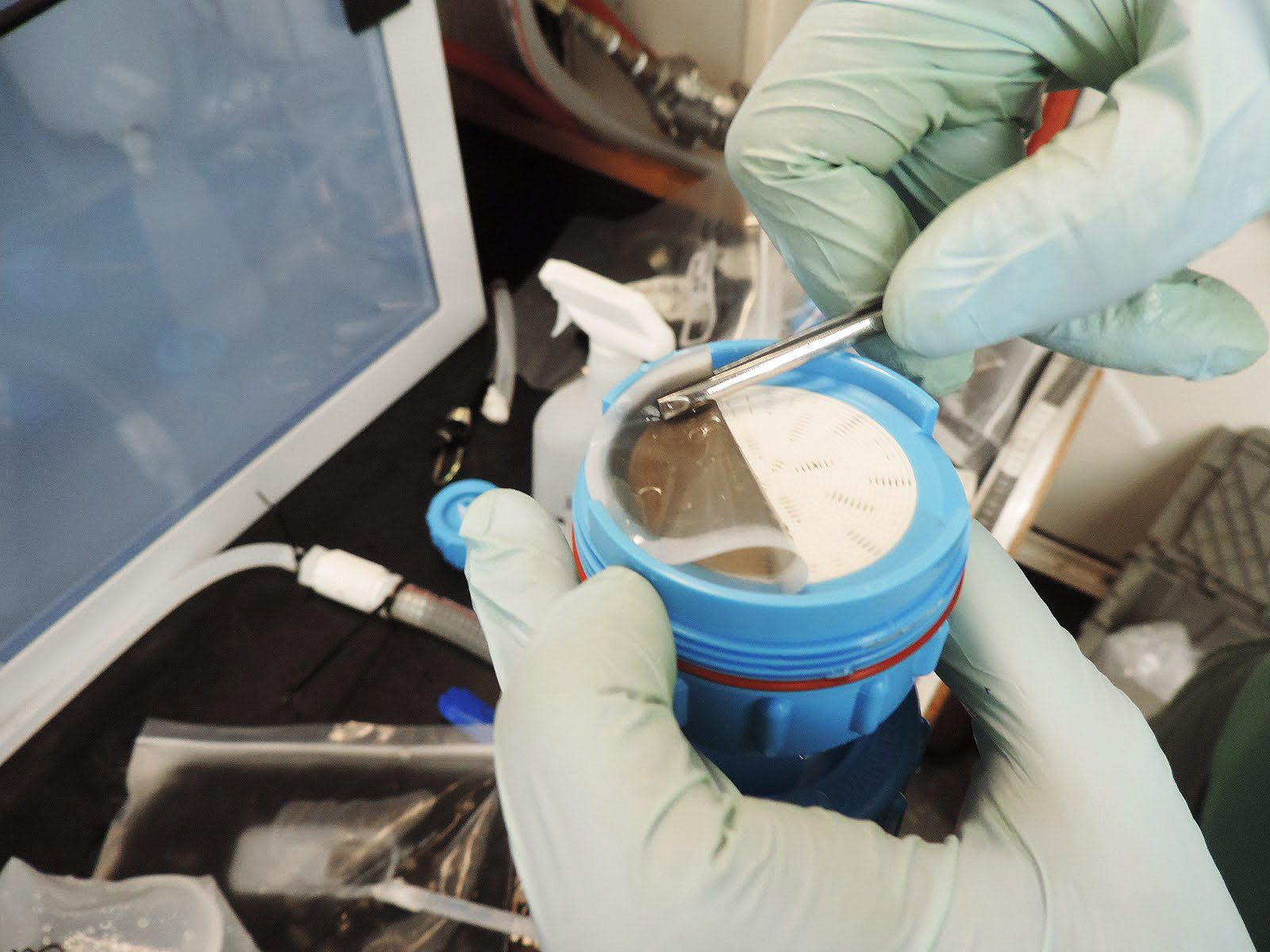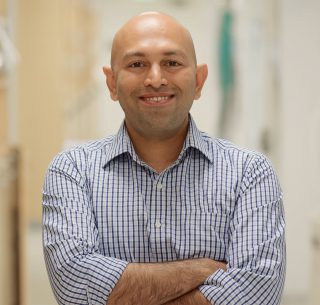The deep sea is a hostile environment to most life. There is little by the way of food or other resources. To make matters worse, no light reaches the depths of the oceans. Amidst this darkness exist hot spots of chemical activity in the ocean bed known as hydrothermal vents, fertilizing the oceans with chemicals and nutrients. These vents are distributed throughout the oceans and are formed due to super-heated water gushing out of the earth at temperatures of up to 400ºC. While hydrothermal vents are indeed hot and no life can sustain at such high temperatures, the fluids cool down rapidly as they mix with the cold ocean waters. This environment – rich in chemicals like hydrogen sulfide, hydrogen, methane, ammonia, and iron – is toxic to most organisms, but ideal for microorganisms to flourish: a microbial party in the making. Hydrothermal vents are like music to microbial ears. Well, they have no ears, but if they did – they would certainly tune in to the hydrothermal radio!
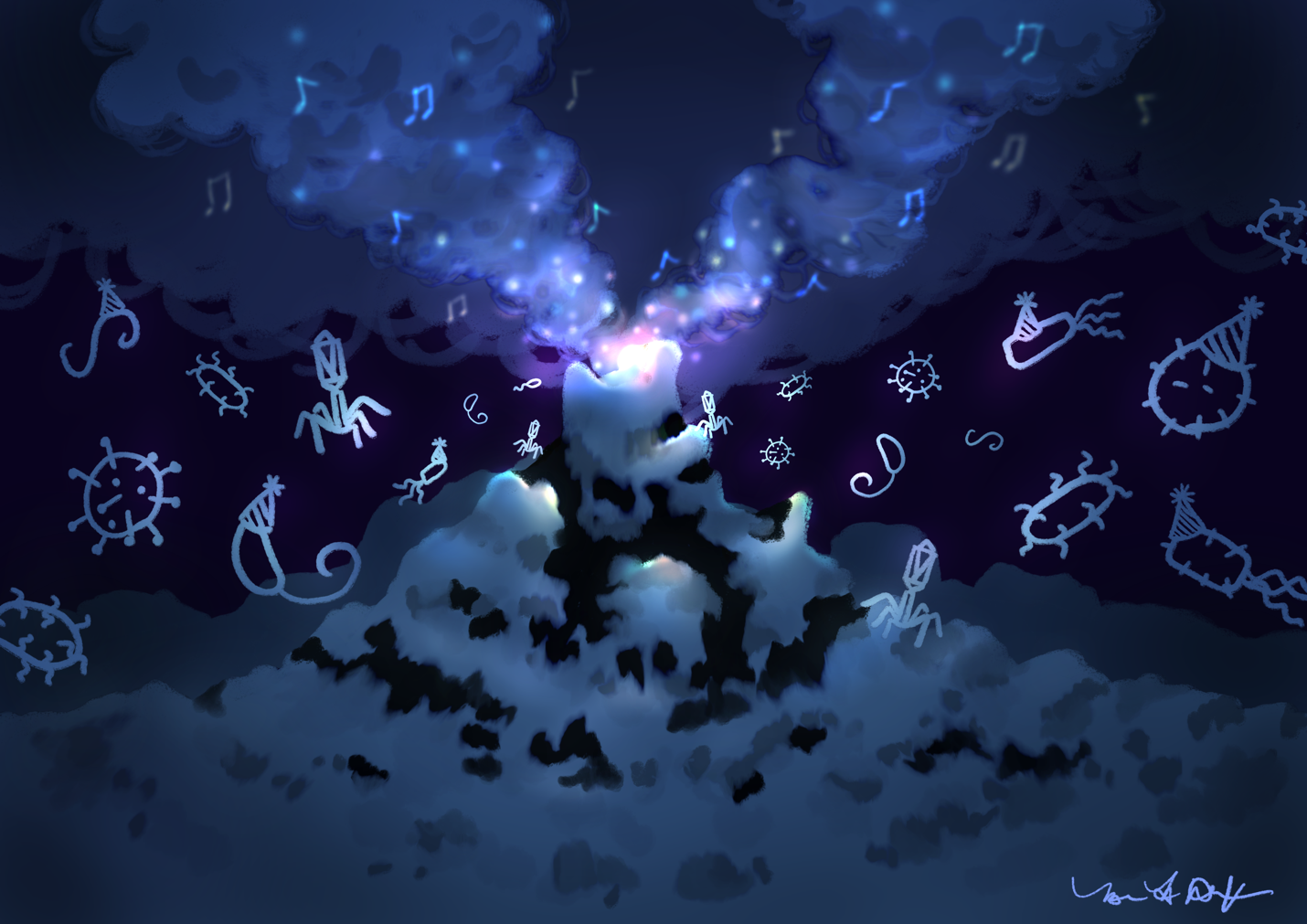
While colorful micro- and macrofauna in hydrothermal environments receive a lot of attention, there are tiny, sightless entities that are critical components of the ecosystem in hydrothermal environments – Viruses! In contrast to their reputation as ruthless killers and purveyors of diseases, viruses perform roles similar to predators in controlling populations of microorganisms from taking over a community and shifting the balance in an ecosystem. In essence, viruses are like sharks – inciting fear in our minds but whose presence and diversity are synonymous with healthy ecosystems.
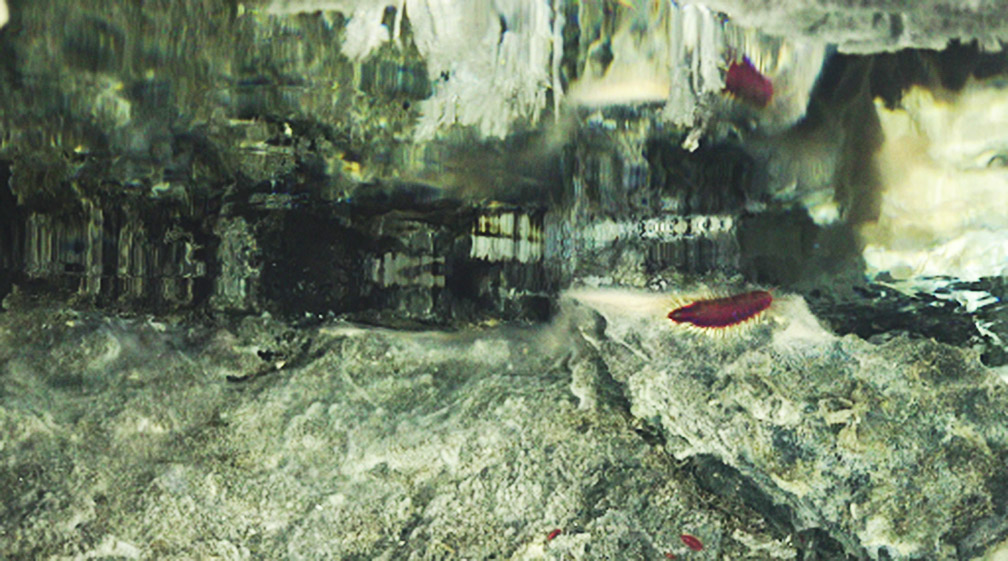
Of all forms of life on our planet, viruses still remain the most enigmatic. Unlike microorganisms and higher life (like humans), viruses cannot replicate by themselves. They replicate by infecting microorganisms (or other cells) and utilizing the machinery within them. Over the eons, this has led to an interesting evolutionary arms race between viruses and microorganisms. Viruses have found innovative ways to infect microorganisms and replicate. One such means involves tricking microorganisms into consuming hydrothermal chemicals and then utilizing the generated energy for replicating viruses inside the microbial cell (and starving the microorganisms themselves). In simple terms, an evolutionary masterpiece!
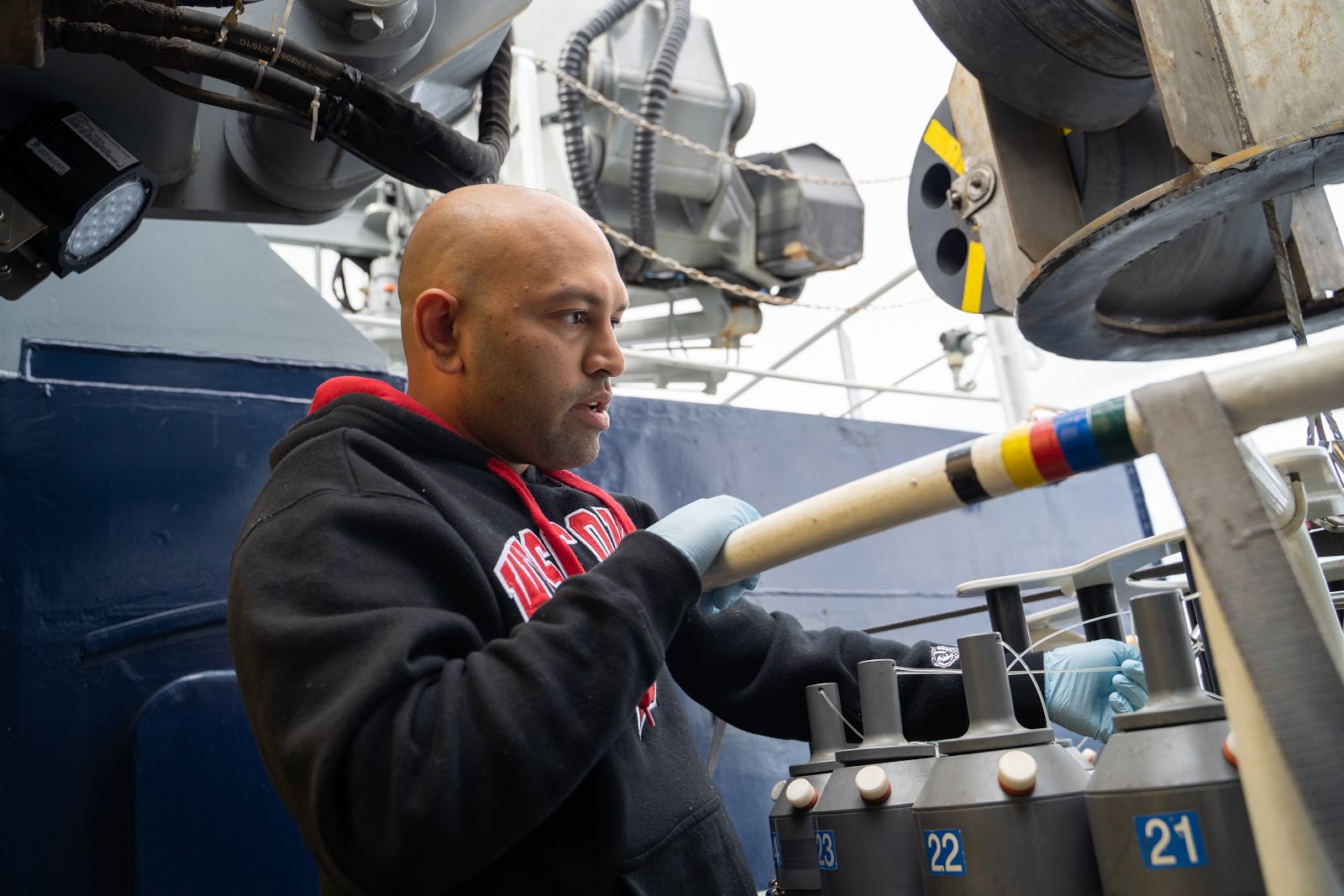
Over the past weeks aboard R/V Falkor, a group of scientists and I have been sampling hydrothermal vents at Guaymas Basin in the Sea of Cortez using ROV SuBastian and water rosette samplers. For the first time, on a science mission in the deep ocean we are using a novel high-throughput filtration system (coined as the HIFIV system) to rapidly filter hundreds of liters of hydrothermal and ocean water for microorganisms and viruses and preserve them on board. We were able to filter 240 L in less than one hour, thereby providing a greater than 1000x improvement in comparison to conventional filtration for viruses on a 0.02/0.03 micron filter that can typically process <5ml/min. This newly achieved efficiency has the potential to open new frontiers in the study of viruses in the oceans. Back in the laboratory, we will perform DNA analyses to understand the lifestyles of microbes and viruses in hydrothermal waters. This data will be critical to understand the biology of ocean viruses and predict how microorganisms and viruses will react to changing oceans in the coming decades. Back in the laboratory, we will perform DNA analyses to understand the lifestyles of microbes and viruses in hydrothermal waters. This data will be critical to understand the biology of ocean viruses and predict how microorganisms and viruses will react to changing oceans in the coming decades.
